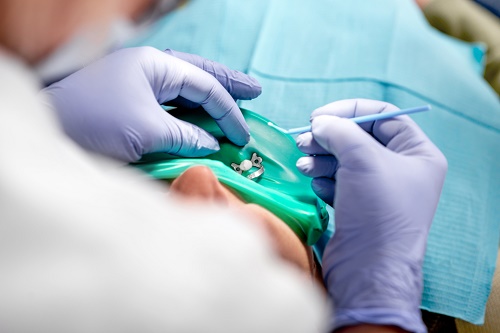Surgical Repositioning of a Tooth
This technique may be used to manage perforations, coronal-third fractures or deeply placed tooth margins. Surgical repositioning of a tooth is frequently performed when crown lengthening or extrusion are not viable options. During this surgical procedure, patients receive either general or local anesthesia. The endodontist uses extraction forceps to gently move the traumatized tooth to its proper position within its alveolar socket. Once the tooth is repositioned, soft tissue damage can be addressed. The tooth is generally fixed in place using acid etch/resin splint. Depending on the case, the tooth may need to be removed, bathed in saline and then reinserted. Tooth intrusion may result in the loss of the tooth due to infection related resorption or ankylosis (replacement resorption).

Orthodontic Repositioning
Patients who are coming in for delayed treatment may prefer this repositioning method. An orthodontic appliance is used to anchor the traumatized tooth. This device is connected to two or more of the teeth on both sides of the affected tooth. Elastic traction is used to pull the intruded tooth down to its proper position. The repositioned tooth and the marginal bone are able to repair themselves at the same time. The orthodontic appliance remains intact for 3 to 4 weeks.
Surgical Repositioning With Fixation
This technique is used during the acute phase of an injury and when permanent teeth are affected. If there is intrusion, in conjunction with major tooth dislocation (equaling approximately half a crown length), surgical repositioning may be necessary.
Await Spontaneous Eruption
This procedure is performed when primary and adolescent teeth have roots that are not completely formed and is accompanied by moderate intrusion. If spontaneous eruption does not occur within 4 weeks, orthodontic repositioning of the tooth may be necessary.
Endodontic Treatment
Endodontic treatment is designed to prevent necrotic pulp from initiating infection-related root resorption. Surgical repositioning of a tooth must be considered in every case that has completed root formation and the chance of pulp revascularization is minimal. Ideally, endodontic therapy should begin within 3-4 weeks post trauma. Call a Houston endodontist for more information and immediate help, today.
